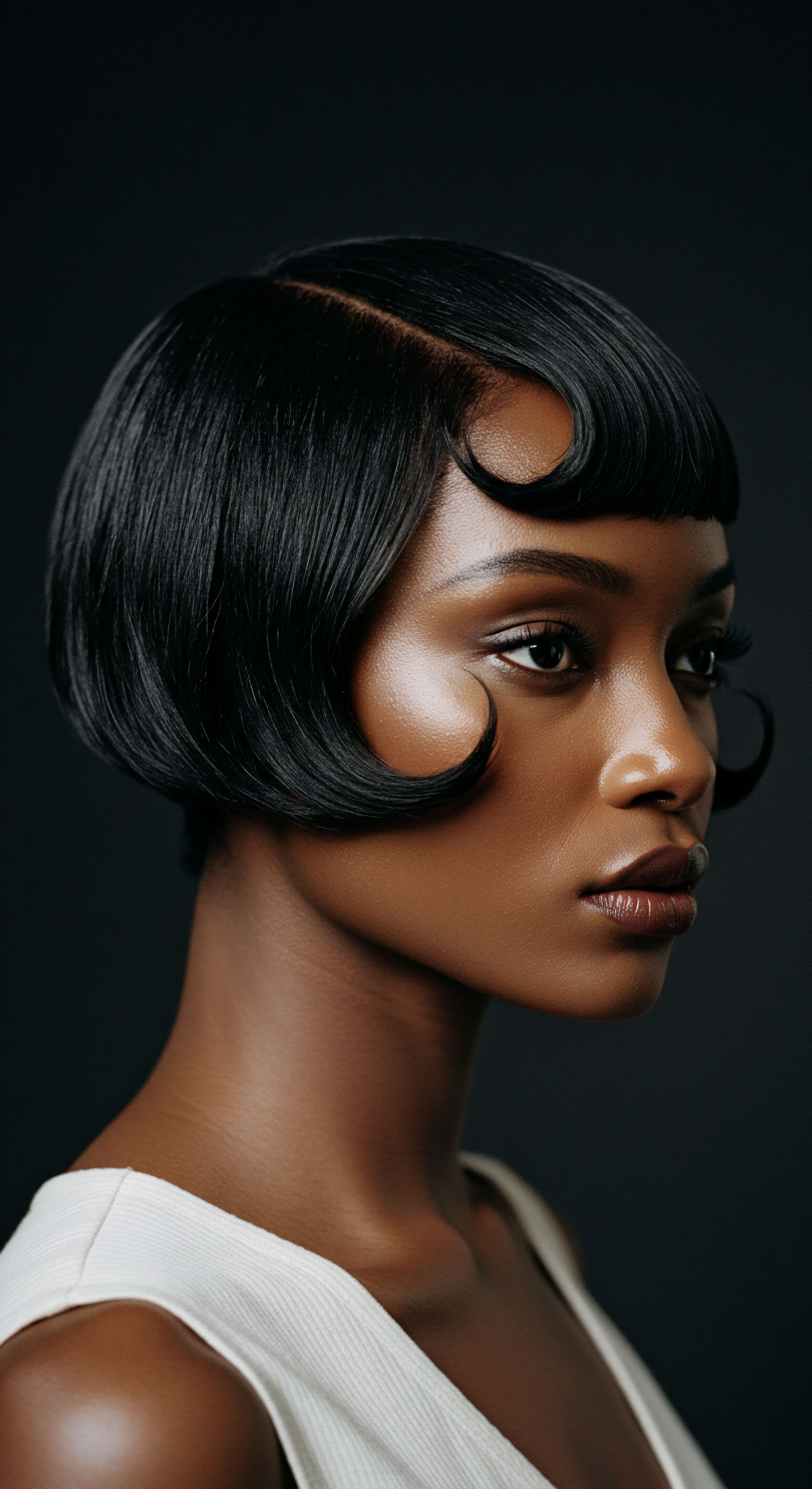
Roots
The quiet rustle of silk, a sound almost whispered through generations, holds a story far older than our contemporary understanding of hair care. For those with textured strands, the very idea of protecting our delicate coils and curls often feels like a recent revelation, yet its origins stretch back into the deepest currents of human ingenuity and cultural wisdom. Consider, for a moment, the quiet revolution woven into the fabric itself ❉ a fiber spun by the silkworm, Bombyx mori, whose singular creation became a conduit for preservation, comfort, and reverence for hair across diverse civilizations.
It is a testament to the acute observation of our ancestors, who, without the benefit of modern microscopy, discerned the subtle yet profound kinship between silk’s smooth caress and the intricate structure of textured hair. This connection, initially an intuitive knowing, laid the foundation for practices that continue to resonate with our hair’s inherent needs today.
Long before the advent of laboratory-derived conditioners or advanced hair treatments, the properties of silk were recognized and utilized. Ancient communities, particularly in regions where silk cultivation flourished or where trade routes made it accessible, discovered its remarkable ability to minimize friction. This insight, perhaps born from observing how silk garments draped without snagging, translated directly to its application for hair.
The delicate nature of textured hair, characterized by its unique curl patterns and susceptibility to dryness, made it particularly vulnerable to breakage caused by abrasive surfaces. Ancestral protectors of hair, therefore, sought materials that offered a gentle shield.
Ancestral communities intuitively understood silk’s unique capacity to shield textured hair from friction and moisture loss.
The very composition of silk, primarily fibroin and sericin proteins, grants it an exceptional smoothness that distinguishes it from other natural fibers like cotton. Cotton, with its shorter, coarser fibers, creates microscopic snags and friction points against the hair cuticle, leading to mechanical damage and the disruption of moisture balance. Silk, conversely, offers a near-frictionless surface.
This physical characteristic was not merely a comfort; it was a silent guardian against the daily wear and tear that could compromise the health and length retention of textured hair. The wisdom passed down, often through oral tradition and lived example, centered on this fundamental protective quality.

What Ancient Cultures Recognized in Silk
Across continents, from the opulent courts of imperial China to the bustling markets of the Silk Road, and even within the domestic spaces of various African communities, silk found its place in hair care. Its initial recognition stemmed from a practical need ❉ to protect elaborate hairstyles, preserve moisture in dry climates, and maintain the integrity of hair that was often styled with natural oils and butters. The practices varied, yet the underlying principle remained constant ❉ silk as a barrier.
- Chinese Dynasties ❉ Historical records from ancient China depict women of various social strata using silk in their hair. Beyond decorative purposes, silk head coverings and wraps were employed to maintain intricate updos and to protect the hair from environmental aggressors, particularly dust and sun. The reverence for long, healthy hair was intertwined with its protection, often facilitated by silk.
- African Diasporic Practices ❉ While direct historical evidence of silk cultivation in pre-colonial Africa is less prevalent than in Asia, the movement of goods along trade routes introduced silk textiles. More significantly, the concept of protecting hair with smooth, non-absorbent materials was deeply ingrained. This manifested in the use of various smooth fabrics for headwraps and sleeping coverings, with silk becoming a highly valued option where available. The tradition of wrapping hair, especially at night, served as a foundational practice for preserving styles and preventing tangles and breakage, a practice that aligns perfectly with silk’s properties.
- Middle Eastern and South Asian Traditions ❉ Silk head coverings, veils, and hair accessories were common across these regions, serving not only cultural and religious purposes but also practical ones. The ability of silk to keep hair smooth and minimize frizz was likely observed and valued, contributing to its enduring presence in hair care rituals.
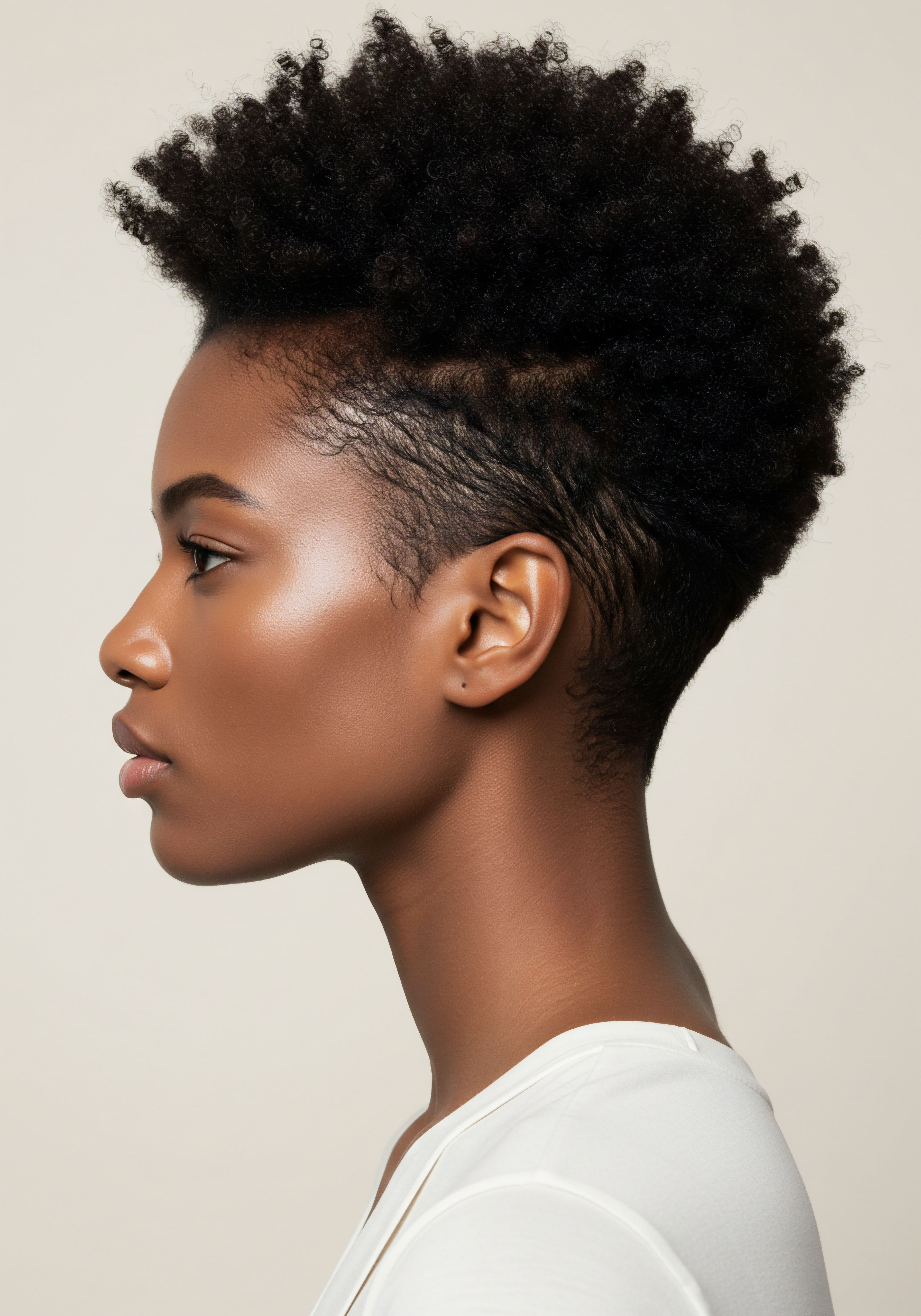
The Science of Silk’s Ancestral Understanding
Even without the vocabulary of modern trichology, ancestral practices demonstrated an innate understanding of silk’s benefits. The key lay in two main areas:
- Friction Reduction ❉ Every time textured hair rubs against a rough surface, like a cotton pillowcase, tiny scales on the hair’s outermost layer, the cuticle, are lifted. This lifting makes the hair more prone to tangling, frizz, and ultimately, breakage. Silk’s smooth surface significantly reduces this friction, allowing hair to glide rather than snag. Ancestors observed less breakage and smoother hair when silk was used, directly linking cause and effect through empirical observation.
- Moisture Retention ❉ Unlike cotton, which is highly absorbent and can wick moisture away from the hair, silk is far less absorbent. This characteristic is particularly critical for textured hair, which tends to be naturally drier due to its coil pattern making it harder for natural oils to travel down the hair shaft. By using silk, ancestors inadvertently created an environment where the hair’s natural oils and any applied moisturizers were preserved, not absorbed by the fabric. This maintained hydration, contributing to healthier, more pliable strands.
The ancient knowledge, passed through generations, was a form of empirical science. Observing hair thriving under the gentle protection of silk, these communities established practices that, centuries later, modern science would validate. The roots of modern textured hair care, therefore, lie not just in scientific discovery, but in the enduring wisdom of those who first recognized the silent strength and gentle care held within a silken touch.
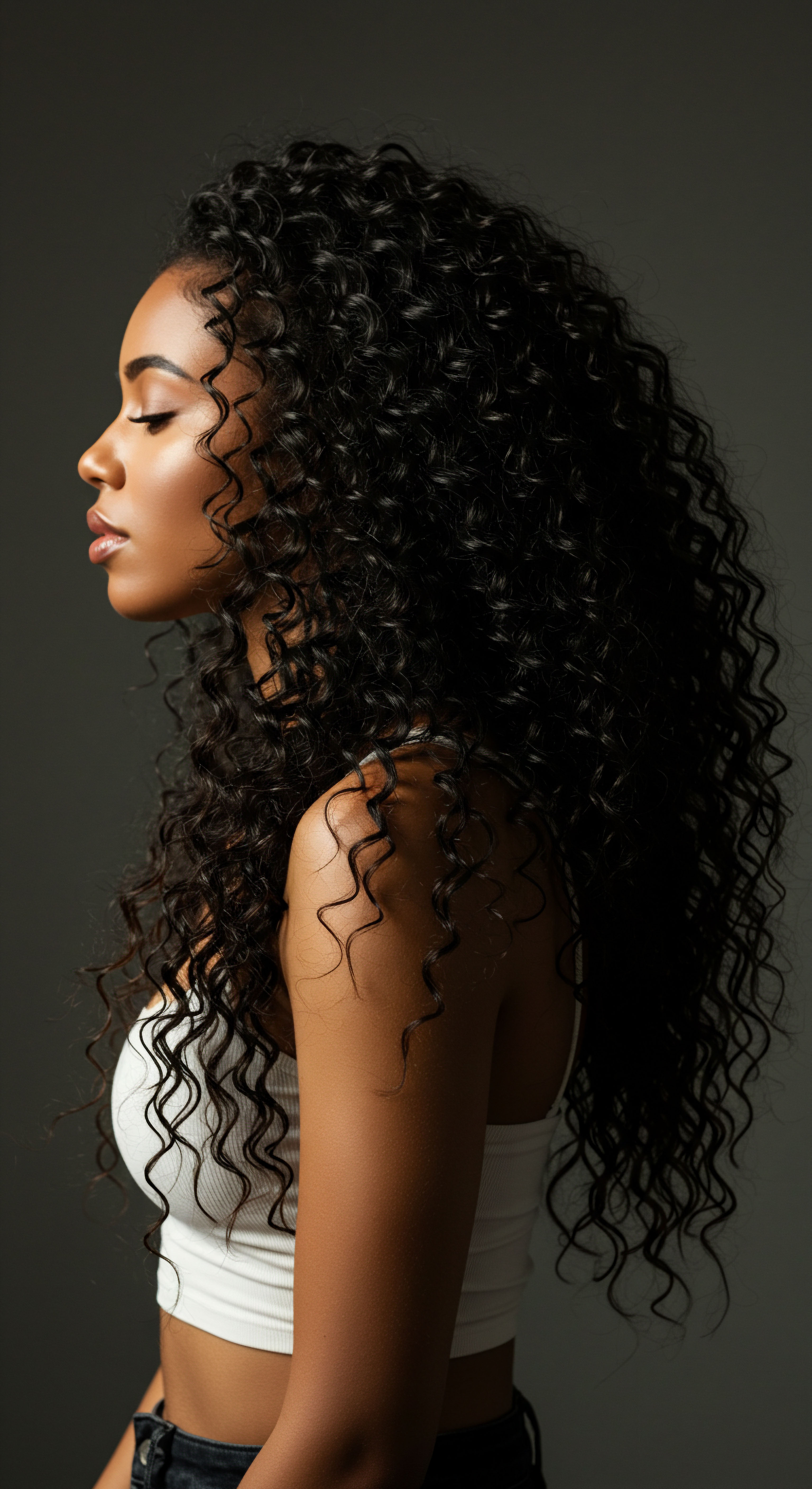
Ritual
Stepping from the foundational recognition of silk’s unique properties, we now turn our gaze toward the deliberate actions, the rhythms of care, that brought this ancient wisdom to life. The transition from knowing to doing, from understanding a material’s benefit to integrating it into daily or nightly practices, marks the true heart of ancestral hair care. It is here, within the realm of ritual, that silk transcended its role as mere fabric to become a vital component of hair preservation, shaping the routines that allowed textured hair to flourish. These rituals, often simple yet profoundly effective, represent a quiet conversation between the individual and their hair, a commitment to its health and beauty.
The protective qualities of silk were not simply acknowledged; they were woven into the very fabric of daily life. For many with textured hair, the challenges of tangling, breakage, and moisture loss were constant companions. Ancestors, driven by necessity and an intuitive connection to their hair, developed methods to mitigate these issues. The common thread among these practices was the use of silk, or silk-like smooth fabrics, as a barrier.
Ancestral hair care rituals integrated silk as a protective barrier, reducing tangles and moisture loss for textured hair.
Consider the simple act of wrapping hair at night. This seemingly straightforward practice carries centuries of wisdom. In many cultures, particularly those with a strong heritage of textured hair, the nightly ritual of covering the hair before sleep was non-negotiable. This was not merely for modesty or warmth; it was a conscious effort to safeguard the hair from the friction of rough sleeping surfaces.
A rough pillowcase, for instance, could undo a day’s worth of careful styling and moisturizing, leading to significant mechanical damage overnight. Silk, with its smooth surface, allowed hair to glide freely, minimizing friction and preventing the formation of tangles and knots that would require forceful detangling in the morning.

Headwraps and Their Protective Purpose
Headwraps, often crafted from fine cloths, including silk where available, served a dual purpose ❉ aesthetic expression and practical protection. During the day, they shielded hair from environmental elements such as sun, dust, and wind, all of which can contribute to dryness and damage for textured hair. At night, a silk headwrap or bonnet provided a consistent, smooth surface for hair to rest against, irrespective of the pillow material.
This practice was particularly significant for maintaining intricate braided or twisted styles, extending their longevity and preserving their definition. The meticulous care taken in styling was thus complemented by equally meticulous protection.
The historical adoption of head coverings, particularly in African and diasporic communities, evolved beyond mere adornment. These coverings became symbols of identity, status, and resilience, but their practical utility for hair health was undeniable. The use of smooth, non-absorbent materials for these wraps directly contributed to healthier hair by reducing friction and preventing moisture evaporation.

The Gentle Art of Preservation
The ritualistic application of silk also extended to preparing hair for styling. Before intricate braiding or twisting, hair might have been smoothed with a silk cloth after the application of natural oils or water. This technique would help to press the cuticle flat, enhancing shine and reducing frizz, much like modern silk presses or flat ironing, but without the damaging heat. The gentle pressure and the silk’s smooth surface worked in concert to align the hair strands, preparing them for styling that would then be protected by silk coverings.
| Fabric Type Silk |
| Surface Texture Smooth, low friction |
| Moisture Absorbency Low |
| Impact on Hair Minimizes breakage, retains moisture, reduces frizz |
| Fabric Type Cotton |
| Surface Texture Rough, high friction |
| Moisture Absorbency High |
| Impact on Hair Causes breakage, wicks moisture, increases frizz |
| Fabric Type Satin (Polyester) |
| Surface Texture Smooth, low friction |
| Moisture Absorbency Low to moderate |
| Impact on Hair Similar benefits to silk, but less breathable |
| Fabric Type Silk and satin are preferred for textured hair protection due to their low friction and moisture-retaining properties. |

From Ancient Wraps to Modern Bonnets
The enduring legacy of these ancestral rituals is strikingly visible in modern textured hair care. The widespread use of silk or satin bonnets, scarves, and pillowcases today is a direct continuation of these age-old practices. Modern hair care enthusiasts, often rediscovering the wisdom of their forebears, turn to silk for the same reasons ❉ to preserve hairstyles, prevent tangles, reduce frizz, and maintain moisture. The principle remains unchanged, only the context has shifted.
Consider the profound impact of a simple silk bonnet on a set of freshly styled twists or braids. The smooth interior protects the hair from the friction of tossing and turning during sleep, ensuring that the style remains neat and defined for longer. This extends the life of protective styles, reducing the need for frequent manipulation, which in itself is a source of potential damage for textured hair. This direct link between ancestral ritual and contemporary practice underscores the timeless efficacy of silk as a hair guardian.
The daily and nightly routines, the gentle application of silk, were not just acts of vanity but acts of preservation. They speak to a deep respect for the hair, recognizing its vulnerability and its power. These rituals, passed down through generations, form a vital bridge between the past and the present, offering practical, tangible methods for honoring and protecting textured hair with the timeless touch of silk.
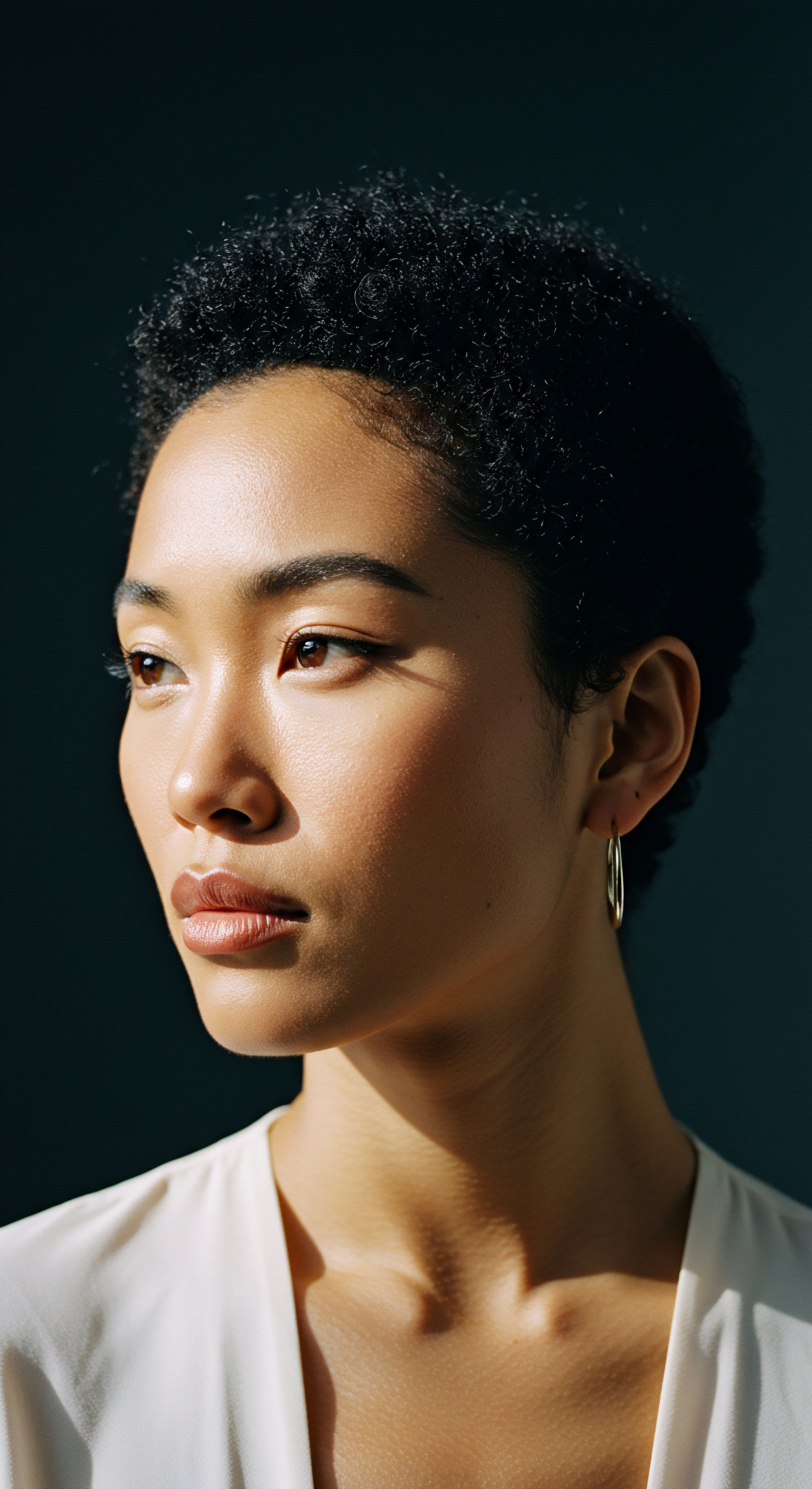
Relay
Having considered the foundational recognition of silk and the practical rituals it inspired, we now turn to the deeper currents that carry this ancestral wisdom into the modern scientific understanding of textured hair. This is where the quiet observations of the past meet the rigorous scrutiny of the present, where cultural practice finds its echo in biochemical pathways. The relay of knowledge across centuries is not merely about replicating old ways; it is about understanding the profound interplay of biology, environment, and human ingenuity that shaped these traditions and continues to inform our care today. What, then, does the science reveal about silk’s extraordinary kinship with textured hair, and how do these insights deepen our appreciation for ancestral practices?
The true marvel of ancestral silk practices lies in their unintentional biomimicry. Long before scientists could isolate proteins or study cuticle morphology, communities intuitively gravitated towards silk because its physical and chemical properties mirrored the needs of textured hair. The hair shaft, particularly in highly coiled patterns, is prone to breakage at the bends of its curves due to inherent structural weaknesses and increased susceptibility to external friction. This vulnerability is precisely what silk addresses.
Modern science validates ancestral silk practices, revealing its biomimetic qualities that protect textured hair’s delicate structure.

The Microscopic Alliance of Silk and Hair
At a microscopic level, textured hair possesses a unique elliptical cross-section and an uneven distribution of disulfide bonds, which contribute to its curl pattern but also make it more fragile than straight hair. The cuticle, the outermost protective layer of the hair, is particularly susceptible to damage from mechanical stress. When hair rubs against rough surfaces, these cuticle scales lift, leading to increased porosity, moisture loss, and a rougher surface that snags easily.
Silk, composed primarily of two proteins, fibroin (about 70-80%) and sericin (about 20-30%), offers a solution. Fibroin provides silk with its remarkable tensile strength and smooth surface, while sericin acts as a natural gum that binds the fibroin strands together. The amino acid profile of silk proteins, particularly the high content of glycine, alanine, and serine, bears a structural resemblance to the amino acids found in keratin, the primary protein of human hair. This biochemical affinity allows silk to interact gently with the hair shaft.
A study published in the Journal of Cosmetic Science (2005) investigated the effect of silk protein on hair. It found that silk proteins could deposit onto the hair shaft, improving its surface smoothness and reducing friction. This scientific validation provides a contemporary lens through which to appreciate ancestral practices ❉ they were, in essence, applying a natural, protein-based treatment that enhanced the hair’s resilience against environmental and mechanical stressors. This insight suggests that the protective qualities of silk extend beyond mere physical smoothness to a subtle biochemical interaction, strengthening the hair’s external layer.

Beyond Friction ❉ Moisture Dynamics and Environmental Shielding
While friction reduction is a cornerstone of silk’s benefits, its role in moisture dynamics is equally profound for textured hair. Unlike highly absorbent materials, silk has a lower absorbency rate, meaning it does not wick away the hair’s natural oils or applied emollients. This is critical for textured hair, which, due to its coiled structure, often struggles with natural oil distribution from the scalp to the ends, leading to chronic dryness.
Consider the impact of ambient humidity. In dry environments, silk helps to retain moisture within the hair shaft, acting as a gentle humectant barrier. In humid conditions, its relatively low absorbency prevents excessive swelling of the hair shaft, which can lead to frizz and cuticle damage.
Ancestral practices, such as wearing silk headwraps in arid climates, implicitly understood this environmental buffering capacity. They created micro-environments around the hair that promoted hydration and stability, safeguarding against the harsh realities of their surroundings.
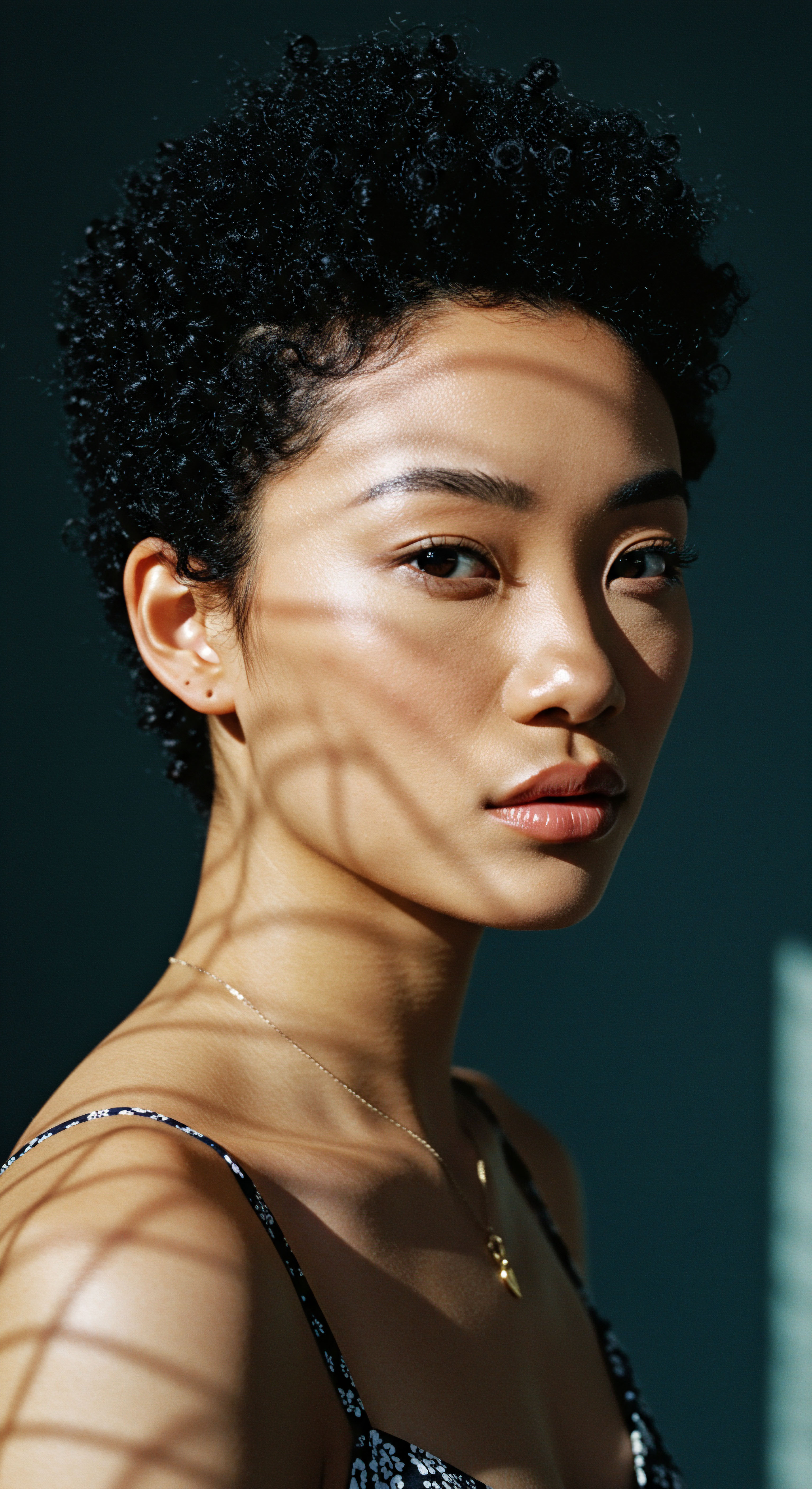
How Does Silk Protein Benefit Hair?
The application of silk, whether through direct contact or in hair product formulations, provides benefits that go beyond simple surface protection.
- Reduced Hygral Fatigue ❉ Textured hair is particularly susceptible to hygral fatigue, the weakening of the hair shaft due to repeated swelling and contracting from water absorption and drying. Silk’s ability to moderate moisture exchange helps to mitigate this stress, contributing to stronger, more elastic strands.
- Cuticle Alignment ❉ The smooth surface of silk helps to keep the hair cuticles lying flat. This creates a smoother, shinier appearance and reduces the likelihood of tangles and knots, which are often a result of lifted cuticles snagging on one another.
- Improved Hair Elasticity ❉ Some research indicates that silk proteins can temporarily bond to the hair, providing a protective layer that may enhance elasticity and reduce breakage from stretching. This is particularly relevant for textured hair, which can be prone to snapping if it lacks sufficient elasticity.
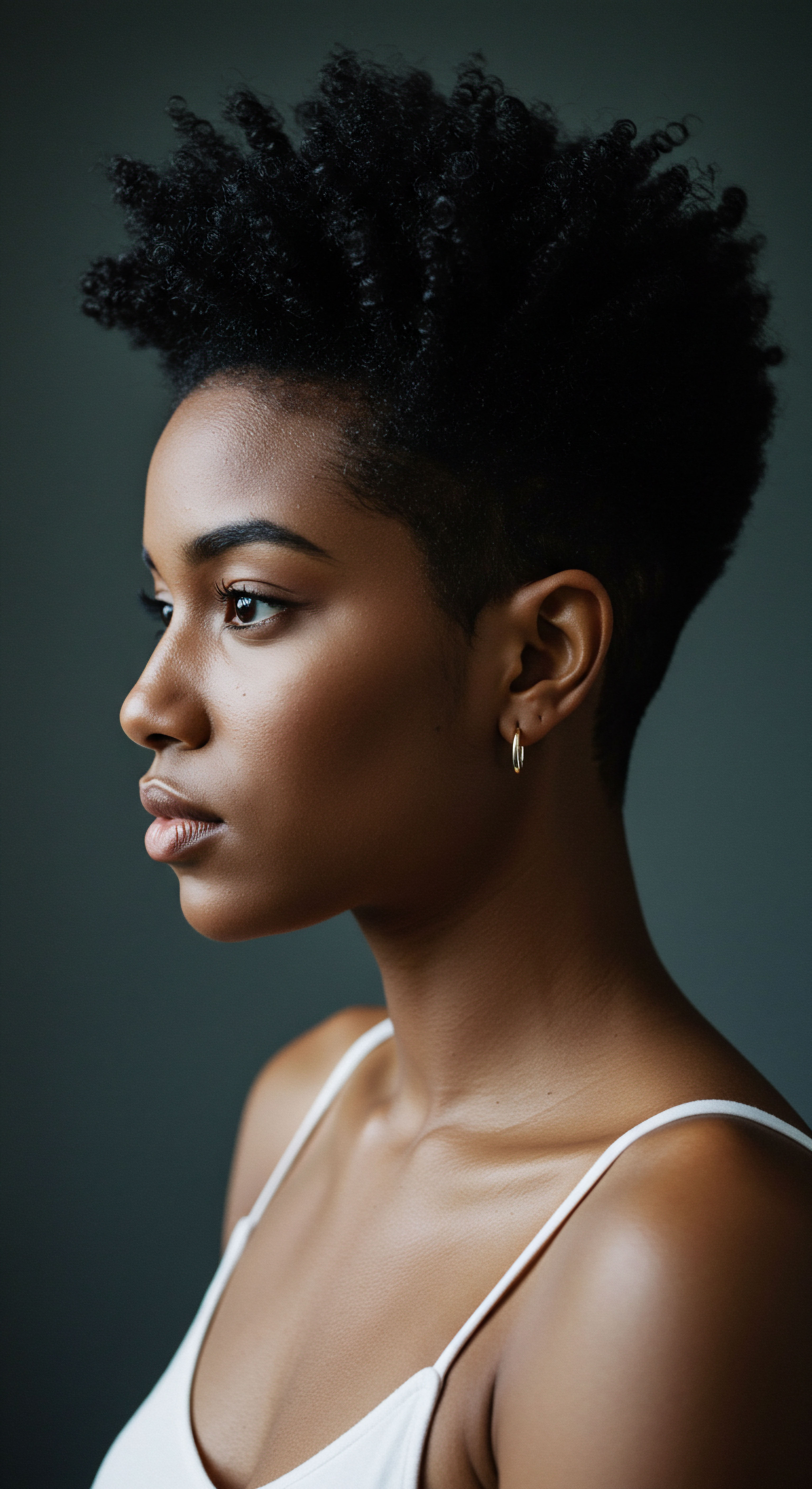
The Cultural Echo in Modern Care
The relay of ancestral knowledge is not simply about historical anecdotes; it is about recognizing the deep, often unspoken, intelligence embedded in cultural practices. The modern resurgence of silk and satin in hair care products—from pillowcases and bonnets to hair ties and even conditioning treatments infused with silk amino acids—is a direct descendant of these ancient traditions. Companies now market these products based on scientific claims of friction reduction, moisture retention, and cuticle smoothing, validating what ancestors observed through generations of lived experience.
The enduring practice of using silk for textured hair care stands as a powerful example of how deep cultural wisdom, passed down through the generations, often contains profound scientific truths waiting to be formally articulated. The delicate touch of silk, a whisper from the past, continues to offer a potent shield for the vibrant diversity of textured hair today.

Reflection
As we gently unfurl the layers of ancestral practices involving silk and their resonance with modern textured hair care, a profound truth emerges ❉ the quiet wisdom of our forebears, often dismissed as mere tradition, holds an undeniable scientific elegance. The delicate fibers of silk, spun by nature’s own hand, became a silent guardian for hair, a testament to keen observation and an intuitive understanding of hair’s needs. This journey through history, ritual, and science reveals not just the efficacy of a material, but the enduring ingenuity of communities dedicated to preserving and celebrating their hair. It is a quiet call to remember that true innovation often lies not in complex new inventions, but in a deeper listening to the earth and the lessons passed down through time.

References
- Robbins, C. R. (2012). Chemical and Physical Behavior of Human Hair. Springer Science & Business Media.
- Kelly, C. R. & Bhushan, B. (2014). Friction and Wear of Hair. Springer.
- Swift, J. A. (2005). The effects of some proteins on the surface properties of human hair. Journal of Cosmetic Science, 56(2), 105-117.
- Kuhn, S. L. (2009). The Role of Textiles in African Cultures. Smithsonian Institution Scholarly Press.
- Shen, J. & Bi, S. (2017). Silk Fibroin ❉ From Biology to Materials. World Scientific Publishing Co. Pte. Ltd.
- Mills, A. (2018). The Cultural History of Hair. Berg Publishers.
- Marsh, J. (2013). The Hair Handbook ❉ A Practical Guide to Hair Care and Hairdressing. Hairdressing Training.